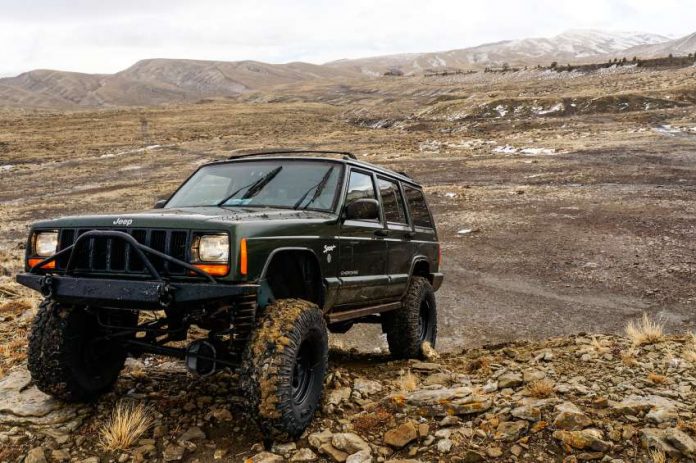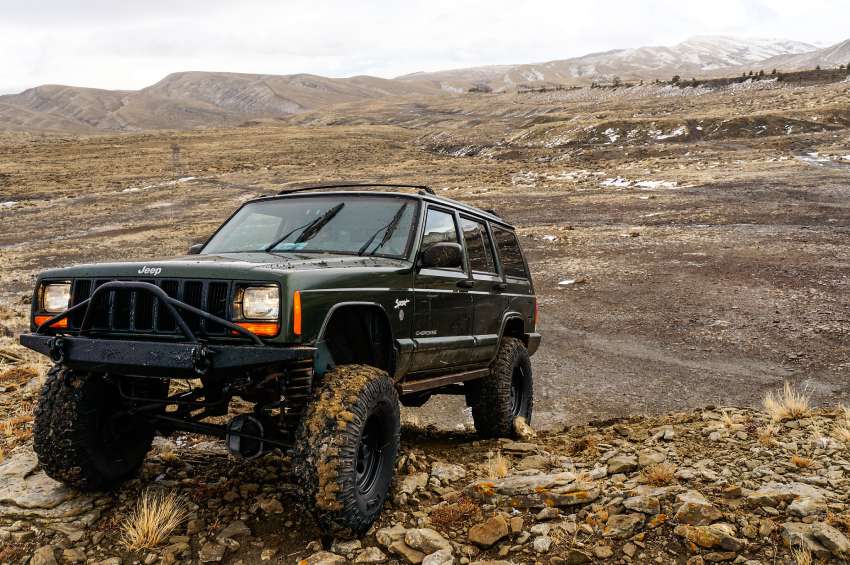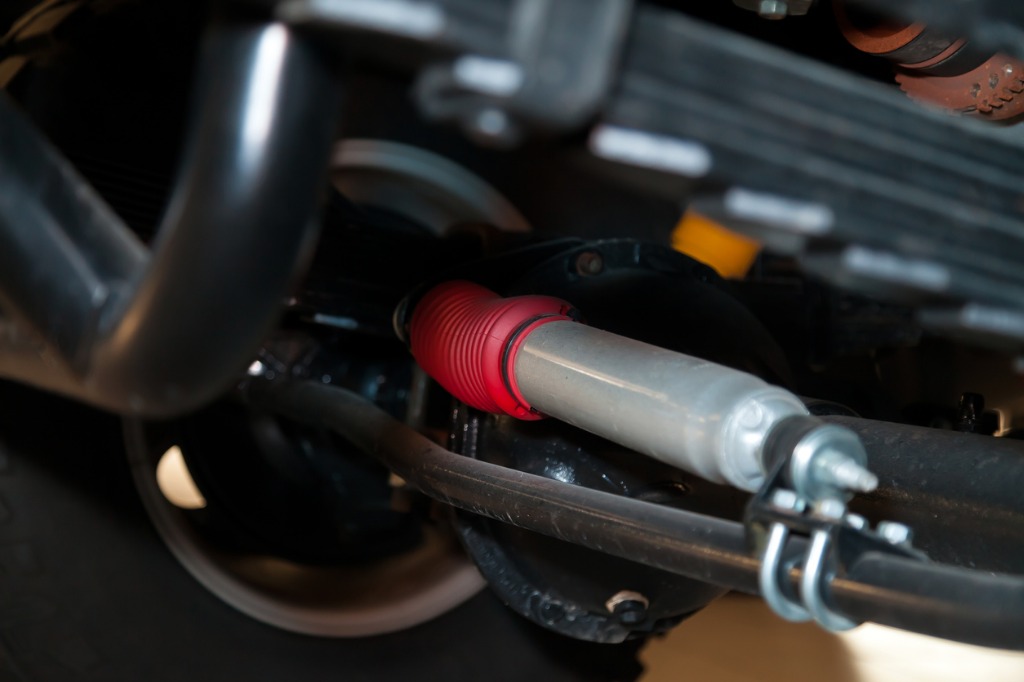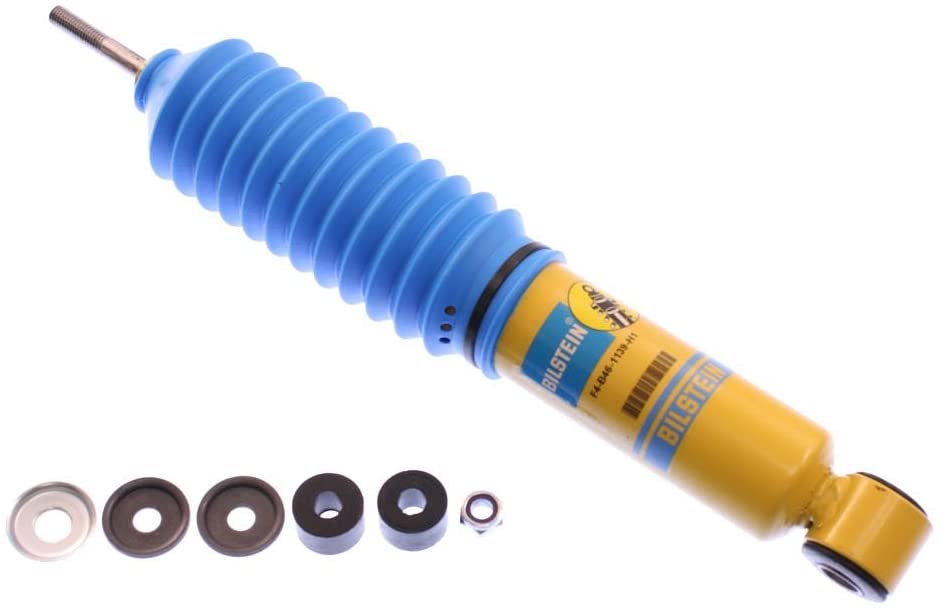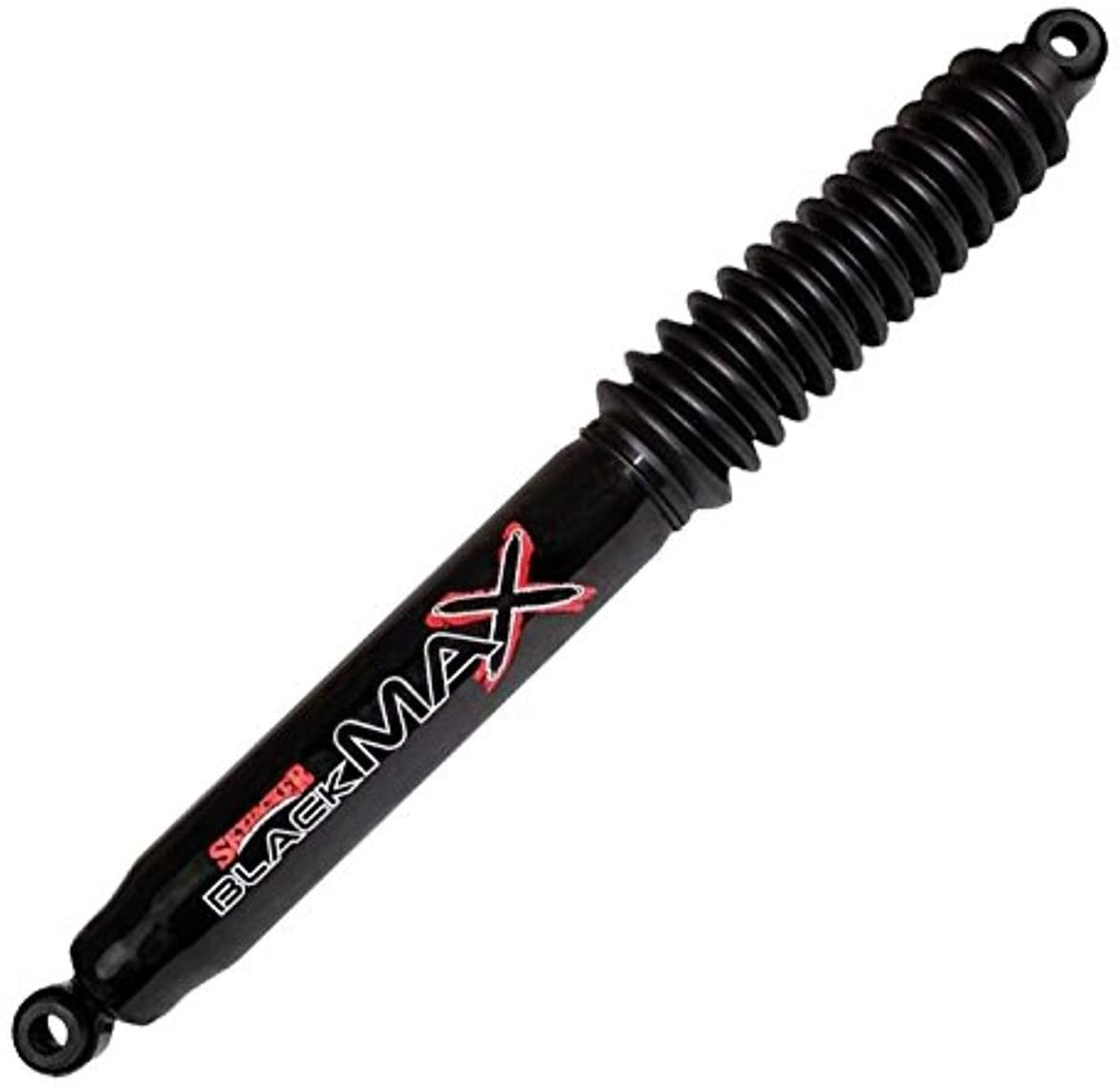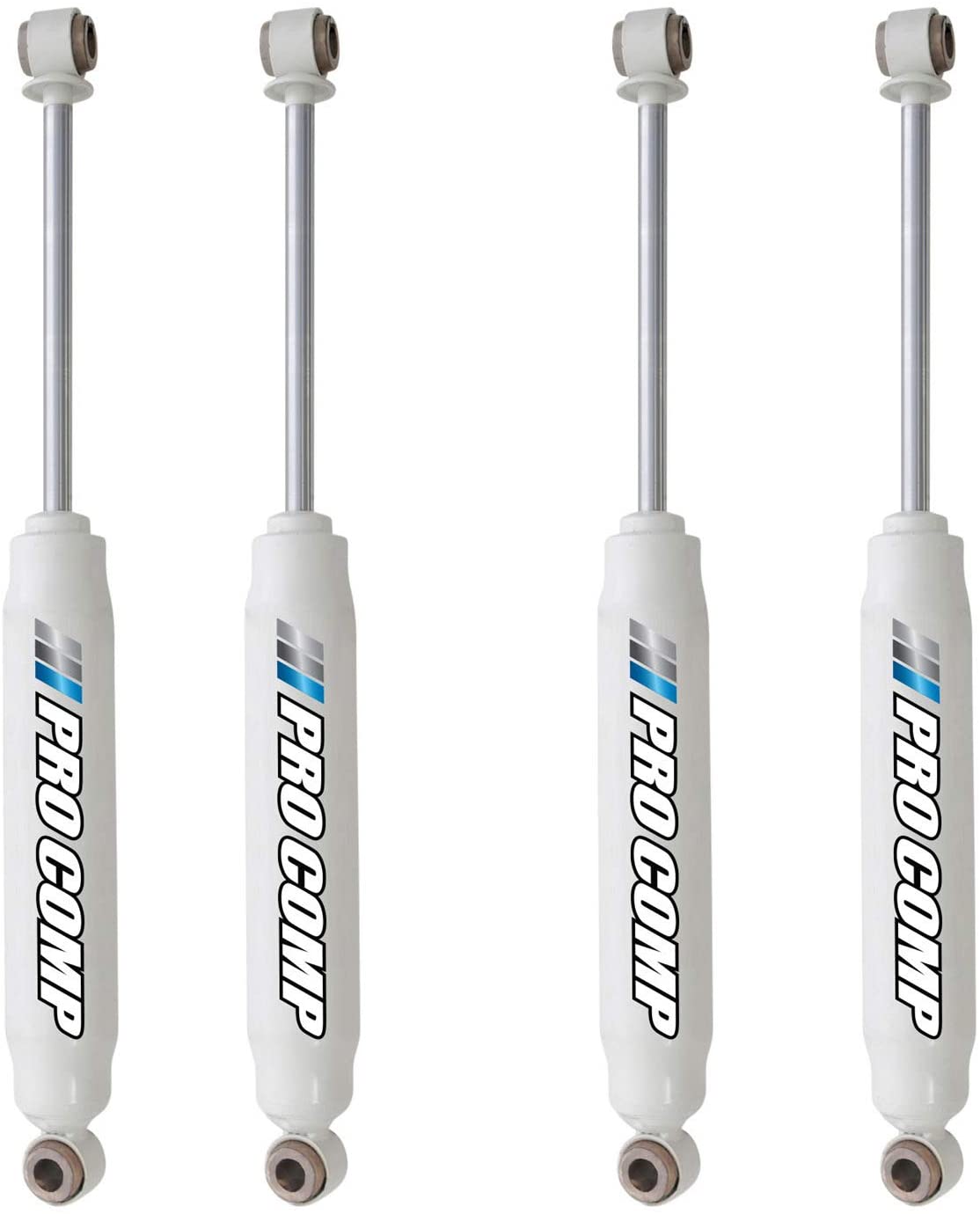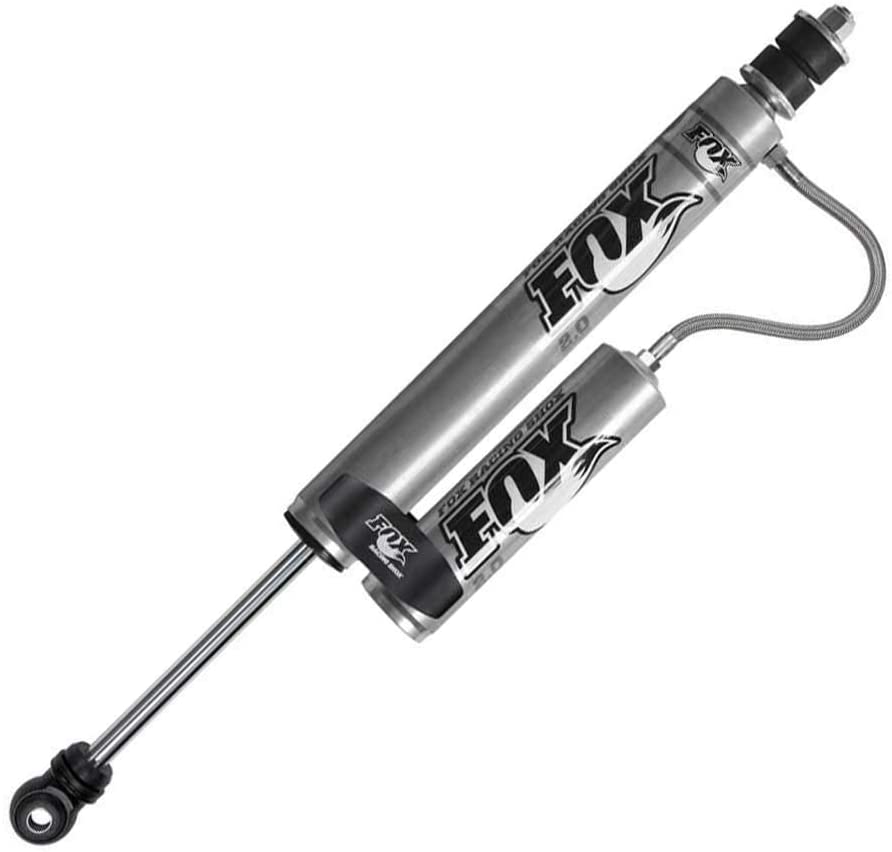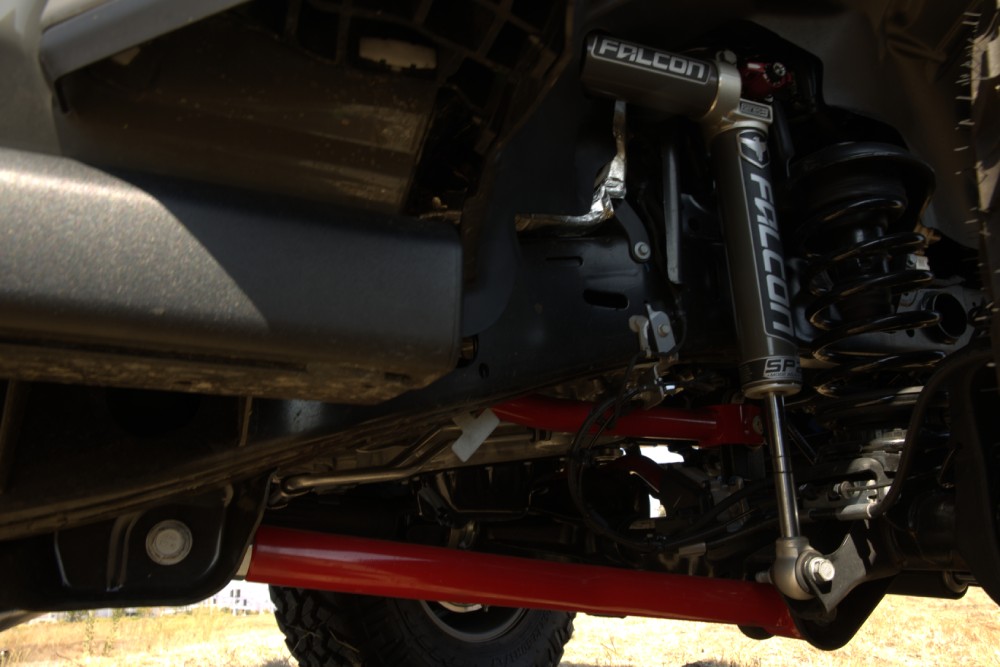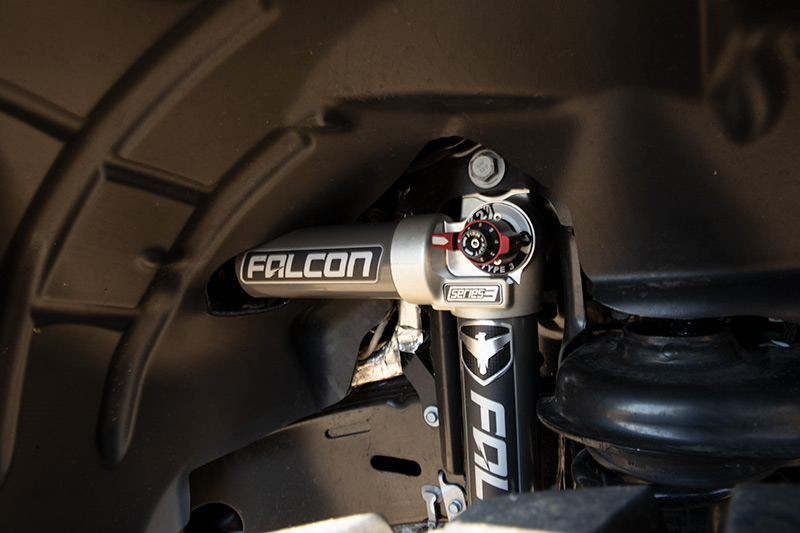“Cody Christmas 003-2” by Powhusku is licensed under CC BY-SA 2.0
If you’re looking to buy shocks for trucks or your four-wheel-drive vehicle, the first thing you need to do is sit down and consider where you’re going to be using your vehicle the most.
Learning about the most common types of shocks is a good plan, too!
Obviously, if you’re going to be overlanding primarily on tarmac, your shocks will need to be much different than if you’re going to be busting over rocky terrain on a two-track through the wilderness.
But there are a lot of shocks for trucks or four-wheel-drive vehicles in the market, so figuring out which type you need can be a bit of a tall task. That’s where this article comes in. That’s where this article comes in.
Let’s quickly go over what shocks are, discuss a few different options, and explore the type of shocks I opted to put on my Jeep.
What are Shocks?
Photo by Aleksandr Kondratov via iStock
Shocks are meant to mitigate the effects of compression and rebound of your vehicle’s suspension. Shocks are what give your vehicle a more pleasant ride experience.
So, when you hit a pothole on the freeway or bounce over some rocks on the trail, your shocks are working to absorb the energy from the movement generated by hitting those obstacles.
Every time the shocks move, they dissipate the energy in the form of heat, thereby reducing the bounce in the ride.
Most of the common types of shocks for trucks or four-wheel-drive vehicles fall into one of two categories – either hydraulic or gas charged.
Gas charged shocks are great if you’re into high-speed driving. This is because gas shocks do not run the risk of aeration, a situation in which air mixes with the fluid. That’s a bad deal because foam forms and the performance of the shocks is minimized. This is an issue with hydraulic shocks.
But gas shocks for trucks or four-wheel-drive vehicles tend to be much stiffer than hydraulic ones. This results in a firmer ride that can be a bit uncomfortable on tarmac or if you’re taking it slow off-roading.
At the end of the day, though, gas charged and hydraulic shocks have the same basic parts. There’s a piston, valve, and fluid.
These parts achieve their mission because the piston moves as the spring moves, and when that happens, the piston is pushed through the fluid.
This displaces the fluid through small holes, which creates resistance. The resistance slows the spring down, thereby absorbing the energy created by the motion of the spring and minimizing the bounce that you feel in the vehicle.
So, with that short lesson on shocks out of the way, let’s take a look at some common types of shocks for trucks or four-wheel-drive vehicles.
Common Types of Shocks For Trucks, 4WD Vehicles
Common Types of Shocks For Trucks: Coilover
Coilover shocks are great for carrying loads or towing things like a camper. They are perhaps the easiest to rebuild of the bunch, and in many cases, they are adjustable so you can change the level of damping as well as the ride height.
The downside of coilover shocks for trucks or four-wheel-drive vehicles is that they can be spendy. They also require custom mounting (or at the very least, a lot of modification to get them to fit). They can be difficult to tune as well.
Common Types of Shocks For Trucks: Monotube
Monotube shocks have the advantage of offering better heat dissipation than a twin-tube design (more on that below). Additionally, monotube shocks offer better dampening precision, increased strength (thanks to a larger piston), and they can be mounted upside down.
For these reasons, a lot of people that spend their time off-roading opt for monotube shocks for trucks or four-wheel-drive vehicles.
However, system stacking reduces the amount of travel in a monotube shock. And some of them can be pricey as well.
Common Types of Shocks: Twin-Tube
Another common type of shocks for trucks or four-wheel-drive vehicles is twin-tube. If you mostly spend your time on tarmac, a twin tube shock might be the way to go. They perform well in that venue and they are also inexpensive.
However, as discussed earlier, the fluid in the shocks tends to aerate, which reduces their performance. Likewise, the smaller size of twin-tube shocks means there’s a smaller bore size, and therefore less fluid to create resistance. These kind of shocks tend to heat up more quickly at high speeds as well, so if you’re into high-speed off-roading, this is not the best option!
Common Types of Shocks: Gas Charged Twin-Tube
The obvious benefit of gas charged twin-tube shocks is that there is no risk of aeration. This is because the outer chamber of the shock is filled with nitrogen.
These shocks also have improved response that limits brake dive under heavy braking. They also offer better and faster rebound.
However, gas can leak from the shock over time. Service life can also be reduced. Perhaps the biggest issue is that they can be hard to install if the axle is not dropped. These are just a few primary concerns to consider when buying this kind of shock.
Common Types of Shocks: Reservoir
Reservoir shocks for trucks or four-wheel-drive vehicles offer a variety of benefits. There’s no risk of aeration and you get more valving options. Likewise, they offer increased travel. This is because the piston can stroke fully through the shock’s body.
When the shock is compressed, additional fluid is forced into the external reservoir. This helps dampen at a steadier rate. These shocks are also rebuildable, which is a huge benefit for those long Overlanding journeys when something might go wrong.
All this comes at a cost, though, as these shocks tend to be very expensive.
Another issue to be aware of is that these shocks might require a special mount for the reservoir. And because they have so many fittings, reservoir shocks are more likely to leak.
So, each type of shock has its pros and cons. What you need to do is consider how these pros and cons fit in with how you plan to use your vehicle.
The Shocks I Went With for my 2020 Jeep Gladiator Rubicon
I outfitted my Jeep with reservoir shocks. Specifically, they are TeraFlex Falcon SP2 3.3 Piggyback Shocks.
One of the features that I liked about these shocks is that there are all kinds of controls I can use to set the firmness. In fact, the three-position Fast Adjust Knob allows me to change between soft, medium, and firm. The medium setting gives me eight different positions to give me even more precise tuning between the soft and firm ends.
There’s also an SP2 Mode Adjust feature that tunes the compression and rebound for both soft and performance settings.
I typically keep the ride firm, which equates to a rougher ride, but that firmness helps diminish body roll.
But, as I just noted, with all the different adjustments that are available, I can tailor the ride to the task at hand while getting the comfort, handling, and stability I need.
Yes, these shocks were expensive, but man, they are worth every penny! I’ll have a full review on these shocks in the coming weeks, so stay tuned for that.
For now, you’ve got a little more information about the most common types of shocks. Use this as a springboard for researching and purchasing the best shocks for trucks or four-wheel-drive vehicles.



